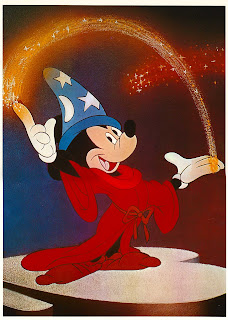Ten Key Developments in the Production of Work:
1445 Johannes Guttenberg's printing press was invented in 1440 and in 1445, he produced the first printed book in Europe; the Gutenberg Bible. This led the way for many more printing machines to be invented with similar techniques, using movable type. The efficiency of using a machine in which only the type is changed, meant that books could be printed far more quickly than the traditional handwritten ways, allowing for there to be more produced, and therefore being cheaper and more widely available to the masses.
1796-9 Alois Senefelder invented Lithography. This was the first new printing technology since the invention of relief printing in the fifteenth century. It is based on the chemical repellence of water and oil. The design is drawn or printed with a greasy ink or crayons onto prepared limestone. The stone is then moistened with water, which is accepted where the design is not drawn (as the water is repelled by the oils). An oily ink is applied with a roller and is only taken on where the drawing appears and is repelled by the wet areas. The stone is then pressed to paper to produce a print. This technology allowed for a level surface to be used for printing, so it could be re-used, and was much quicker than relief carvings.
1798 A paper-making machine was invented by Nicolas-Louis Roberts. Since the invention of paper in China during AD 105, the amounts of paper available would be limited. By speeding up the process of manufacturing it, then it could become more efficiently produced and therefore cheaper and available to more people.
1861 The first colour photograph was taken by Clerk Maxwell. This paved the way for design to be far more exciting and attractive with the addition of colour in photography, for realistic, life-like tones.
1881 The halftone process was invented by Frederick Ives. This is a process by which the tones of a photographic image are represented by tiny dots of different sizes. The subject is photographed through a cross-line screen to produce a half-tone negative image, which is used to make a printing plate. A picture printed from this plate is made up of dots in proportion to the size of the light passing through the negative. This was the main factor in the expansion of illustrated newspapers and magazines during 19th century which lead to the high quality of newer productions of printed image.
1886 The Linotype machine was invented by Ottmar Mergenthaler. This machine produces lines of metal type made from words all put together in a mould from molten metal, created when the operator types out on the keyboard the letters and words which are required. These lines of type are then used in the printing press. These lines are hard wearing and can be used to produce many copies.
1920s The Aniline process was developed for printing on non-absorbent stock. This meant that printers could print on materials such as cellophane and glossy papers for high quality finishes and a whole new approach to design and print production with interesting, tactile materials.
1987 Adobe Illustrator was launched.
1990 Adobe Photoshop launched.
1999 Adobe InDesign and Press Ready launched.

















































